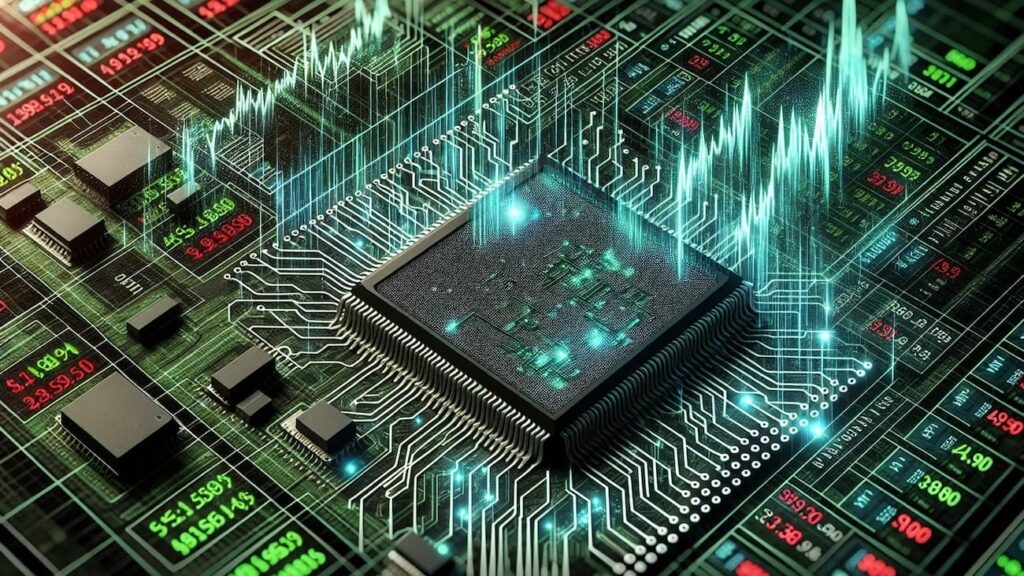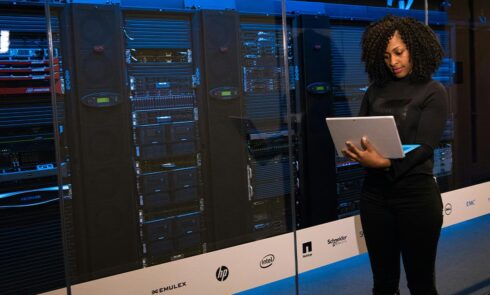In the frenetic world of cryptocurrency trading, where prices swing wildly within milliseconds, access to real-time crypto prices isn’t just an advantage—it’s a survival tool. But what most traders never see is the intricate web of advanced electronics and innovations working behind the scenes to deliver those instant updates. From quantum processors to nanotechnology-refined sensors, this is how modern engineering keeps pace with the crypto revolution.
The Invisible Backbone: 5G and Edge Computing
When you check Bitcoin’s latest price on your phone, you’re likely unaware of the miniature 5G modem humming inside your device. These modems, now smaller than a fingernail thanks to advancements in nanotechnology, reduce data latency to under 1 millisecond. Pair this with edge computing—a system where data is processed closer to the user via localized servers—and you get the seamless delivery of real-time crypto prices even during market chaos. Here’s how they work in tandem:
- 5G Modems: Enable near-instant transmission of price data across global exchanges.
- Edge Servers: Process critical market updates locally, avoiding cloud bottlenecks.
- IoT Integration: Devices like trading terminals prioritize crypto data streams over less urgent traffic.
Quantum Chips: The Silent Game-Changer
While headlines focus on flashy AI predictions, quantum computing quietly reshapes how exchanges process data. IBM’s latest quantum chips analyze millions of transactions simultaneously to predict price trends. These aren’t theoretical experiments: platforms like Binance already use quantum-optimized algorithms to stabilize their real-time crypto price feeds during volatility spikes. Three innovations stand out:
- Qubit Stability: New cryogenic cooling systems allow quantum processors to run longer without errors.
- Hybrid Algorithms: Combine classical and quantum computing to handle sudden market surges.
- Energy Efficiency: Quantum chips now consume 60% less power than traditional server farms.
IoT Devices: The Decentralized Data Army
Imagine thousands of IoT devices—from smart thermostats to industrial sensors—acting as decentralized nodes for price verification. Platforms like Chainlink aggregate data from these networks to combat manipulation. By cross-referencing real-time crypto prices across independent sources, they create tamper-proof feeds. Key data points include:
- Geolocation tags from GPS-enabled devices.
- Timestamped transactions verified by multiple nodes.
- Energy consumption patterns from mining farms (used to infer network activity).
When Digital Twins Mirror Crypto Portfolios
One of 2025’s most intriguing developments is the rise of self-updating digital twins—virtual replicas of physical systems. NVIDIA’s Omniverse platform lets traders create digital twins of their portfolios that adjust to real-time crypto price shifts. The system relies on:
- Real-time API integrations with exchanges like Kraken and Coinbase.
- AI-driven risk assessment models.
- 3D visualization tools (inspired by Aciusa’s 3D printing research).
The Road Ahead: Neuromorphic Chips and Beyond
The next frontier lies in neuromorphic engineering—chips that mimic the human brain’s neural networks. Intel’s Loihi 3 chip processes streaming market data 1000x faster than traditional GPUs. Early adopters are already testing:
- Predictive liquidation triggers based on price volatility.
- Decentralized arbitrage bots operating across exchanges.
- Self-optimizing portfolios that rebalance using real-time sentiment analysis.
What’s clear is this: the race for crypto market dominance isn’t just fought on trading floors. It’s won in clean rooms where quantum bits are stabilized, in labs where nanomaterials are perfected, and in server farms where edge computing reshapes data flow. As Aciusa’s work in advanced tech integration shows, the future of finance is being built transistor by transistor.
High-Frequency Trading Accelerators: A New Frontier
High-frequency trading (HFT) firms have always been at the forefront of technological advancement, and the crypto sphere is no exception. Specialized hardware accelerators—Field-Programmable Gate Arrays (FPGAs) and Application-Specific Integrated Circuits (ASICs)—are customized to execute trades in microseconds. These accelerators, refined with nanometer-scale transistors, allow algorithms to parse real-time crypto prices and respond with lightning speed. As soon as a price anomaly or arbitrage opportunity appears, these chips can execute trades before human traders even see the change on their screens. This level of speed doesn’t merely shave off milliseconds; it fundamentally alters the dynamics of the market, creating new norms for liquidity and price discovery.
Cybersecurity and AI-Based Vigilance
With billions of dollars at stake in crypto markets, cybersecurity has taken center stage, leading to innovations in AI-driven threat detection. Advanced electronics integrated with machine learning algorithms continuously scan market data to spot anomalies—be it a suspicious spike in volume or an unusually large trading order that could indicate market manipulation. These AI models run on high-powered GPUs and neuromorphic chips, which excel at pattern recognition and can process vast amounts of streaming data in real time. As a result, traders and exchanges gain an added layer of protection, ensuring that real-time crypto price feeds remain accurate and free from tampering.
Sustainability in Next-Generation Crypto Tracking

Power consumption is a growing concern as both data centers and blockchain networks expand. Modern data centers, which host the infrastructure for real-time analytics, are turning to renewable energy sources and advanced cooling solutions. Immersion cooling, for example, involves submerging servers in specialized coolant liquids that dissipate heat more efficiently than traditional air-cooling methods. Meanwhile, hardware designers are exploring graphene-based transistors to reduce energy loss and improve overall performance. These developments not only support greener blockchain operations but also pave the way for more sustainable real-time tracking solutions that can handle billions of price updates daily without contributing excessively to carbon emissions.
User-Centric Innovations: From Wearables to Smart Assistants
The push for immediate access to crypto data is no longer limited to smartphones and personal computers. Wearable devices, such as smartwatches with integrated 5G modems, now display real-time crypto prices on the go. Voice assistants, powered by increasingly sophisticated natural language processing chips, can provide up-to-the-second price quotes or market summaries. As these electronics become more miniaturized and energy-efficient, the boundary between traders and their data feeds shrinks to a near-seamless interface. In this way, everyday users—ranging from professional fund managers to casual investors—can stay updated on the latest market swings with minimal effort.
Looking Forward: The Convergence of Tech and Finance
The integration of cutting-edge electronics with the volatile yet opportunistic world of cryptocurrencies has fundamentally changed how markets operate. Traders now rely on hyper-fast connections and advanced computing not just to gain an edge but to survive in an ecosystem where a fraction of a second can determine profit or loss. As neuromorphic chips, quantum computing, and AI-driven security tools continue to evolve, we can expect real-time crypto tracking to become even faster, more secure, and more deeply integrated into our daily lives. Ultimately, the synergy between breakthrough hardware innovations and financial technologies will continue to redefine the very nature of trading, investment, and digital asset management. The future isn’t just around the corner—it’s being forged in the labs and data centers today, one transistor at a time.


